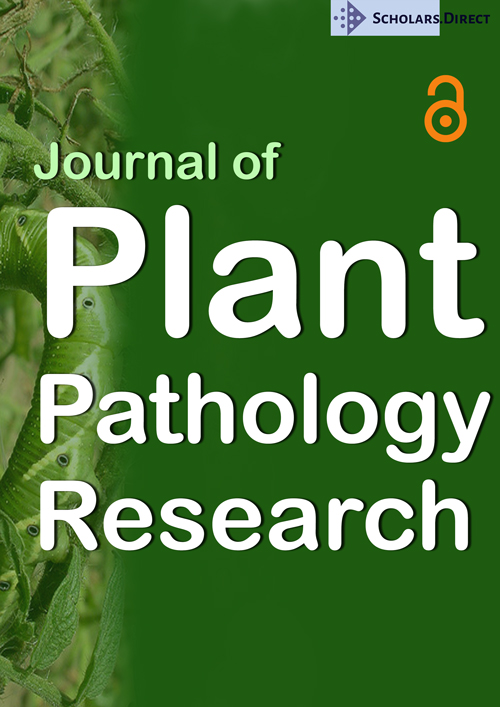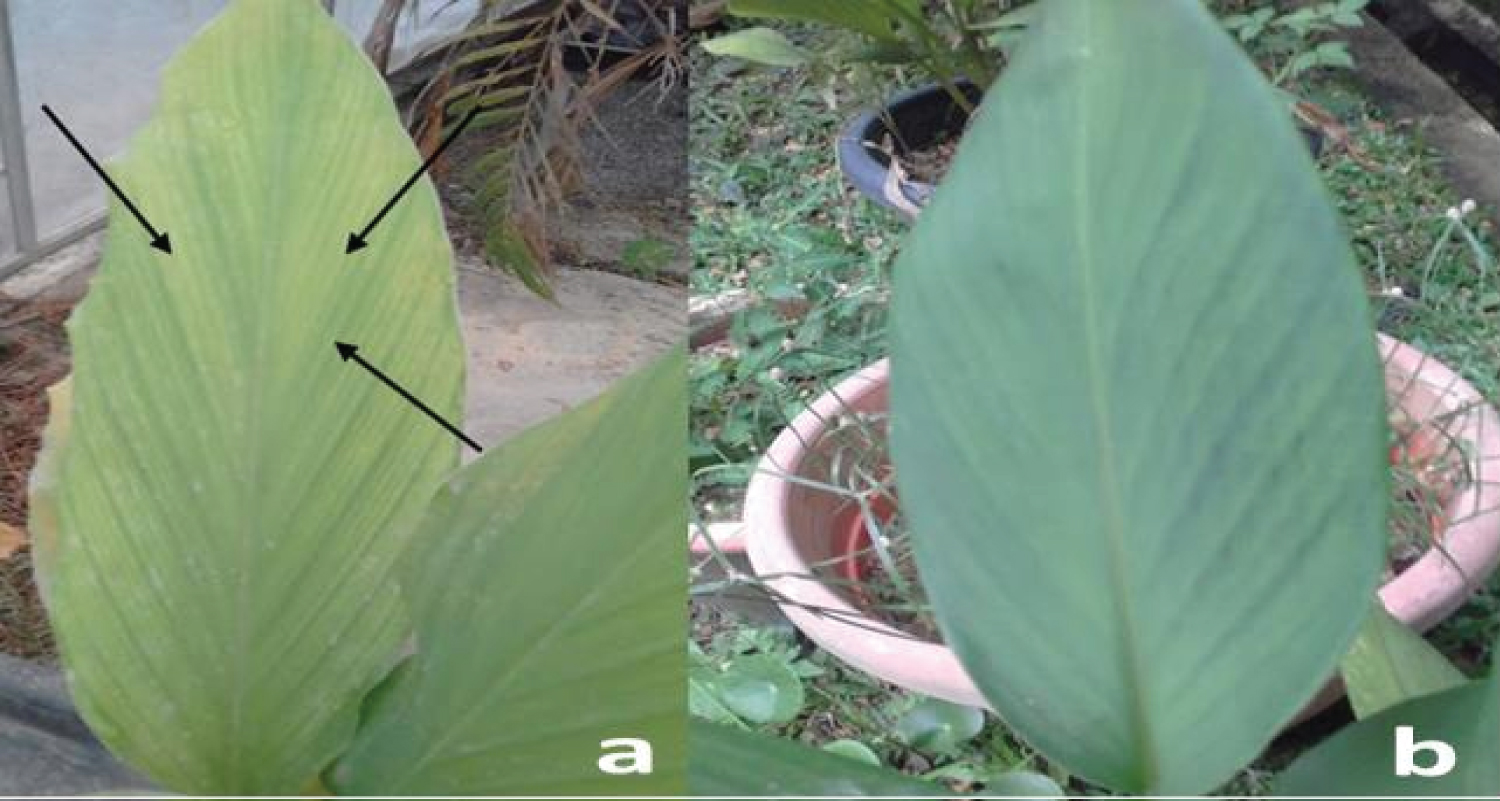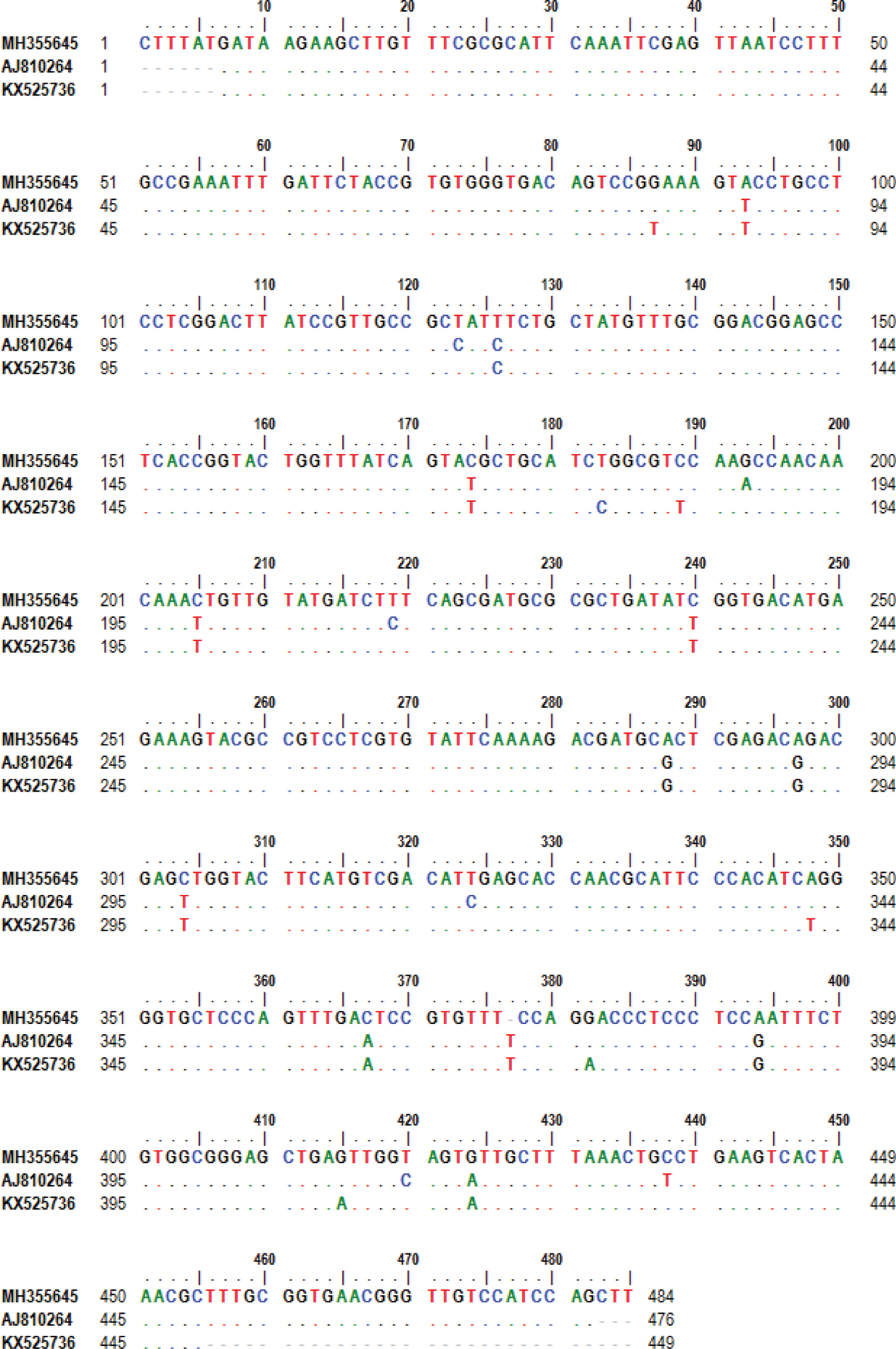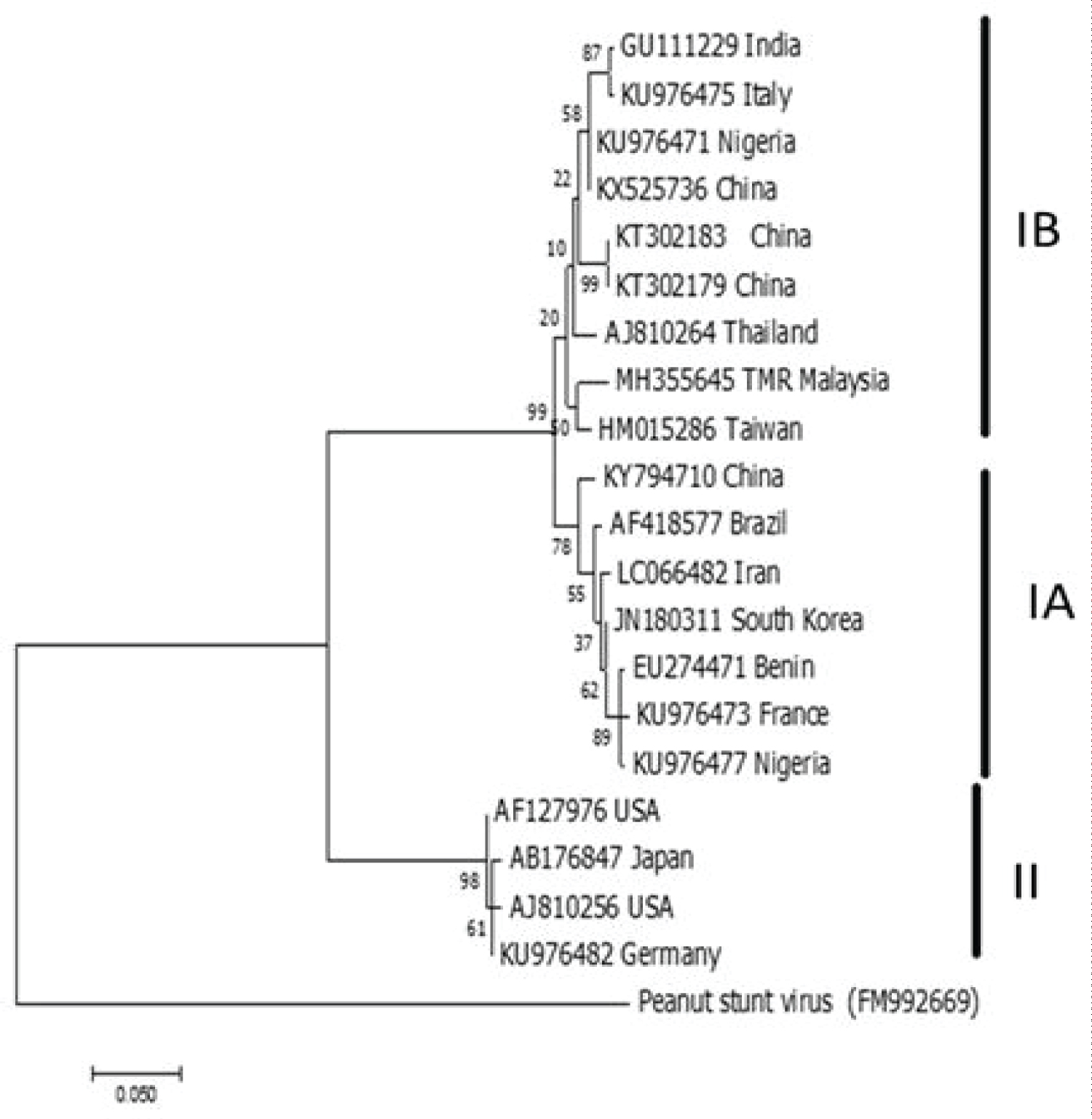Detection and Characterization of Cucumber mosaic virus (CMV) Infecting Turmeric (Curcuma longa L.) in Malaysia
Keywords
Cucumber mosaic virus, Turmeric, Zingiberaceae, RT-PCR
Turmeric (Curcuma longa L.) is among the herbs cultivated in Malaysia, and it is of agricultural, medicinal and socio-economic importance. Cucumber mosaic virus (CMV) has been reported in vegetables, ornamental crops and weed hosts in Malaysia, thus, denoting the long existence of the pathogen in the agroecosystem of the country [1]. Ten samples of turmeric, consist of seven plants showing mosaic, yellowing and chlorosis, and three non-symptomatic samples (Figure 1), were collected from a commercial farm in the state of Selangor in Peninsular Malaysia. Double antibody sandwich Enzyme-linked immune sorbent assay (DAS-ELISA) using CMV-specific antibody by grinding the diseased leaf tissues in PBS pH 7.0 1:5 (w/v) was carried out according to the manufacturer's instructions (Sunlong Biotech, China) to index the virus. In addition, total nucleic acid was extracted from 500 mg leaves of all samples using a modified CTAB extraction buffer [2] and amplified by Reverse transcription polymerase chain reaction (RT-PCR) using CMV CP gene-specific primers [3]. Result of this study showed that only one out of the 10 samples was positive for CMV in both DAS-ELISA and RT-PCR assay. The sample with a mosaic symptom was positive to CMV-specific antibody and produced an amplicon of 500 bp in RT-PCR assay. The amplified product was purified using a Mini Elute Gel Extraction Kit (Qiagen, Germany) and cloned in pCR™ 2.1-TOPO vector (Invitrogen, CA, USA). Three clones were selected and sequenced in both directions. Sequence analysis of the clones showed 96% nucleotide similarity with CMV cucumber isolate from Thailand (AJ810264) and tomato isolate from China (KX525736) (Figure 2). The sequence was deposited in GenBank repository with Accession No. MH355645. Sap from the CMV-positive turmeric, homogenized in 0.01 M phosphate buffer pH 7.4 and inoculated into ten one-month-old healthy turmeric plants produced mosaic and dwarfing symptoms 35 days post-inoculation, similar to the diseased turmeric plant in the field. ELISA and RT-PCR were carried out on the inoculated plant; taking both systemically and inoculated leaves and both methods confirmed the presence of CMV. Maximum likelihood phylogenetic (Figure 3) analysis using nine isolates with representatives from the three groups (IA, IB and II) classified the CMV turmeric isolate (TMR) as CMV sub-group IB member. CMV was first reported in 1916 in the US [4]. So [5] reported a virus in ginger positive to CMV antisera, tentatively naming it as Ginger mosaic virus. Of recent, Dey, et al. [6] found CMV on a Siam tulip, a Zingiberaceae member. Hence, association of CMV with turmeric has therefore corroborated the wide host range of CMV to the family Zingiberaceae. To the best of our knowledge, this is the first report of CMV on turmeric in Malaysia.
References
- Mazidah M, Yusoff K, Habibuddin H, et al. (2012) Characterization of cucumber mosaic virus (CMV) causing mosaic symptom on Catharanthus roseus (L.) G. Don in Malaysia. Pertanika J Trop Agric Sci 35: 41-53.
- Gambino G, Perrone I, Gribaudo I (2008) A rapid and effective method for RNA extraction from different tissues of grapevine and other woody plants. Phytochem Analysis 19: 520-525.
- Wylie S, Wilson CR, Jones RAC (1993) A polymerase chain reaction assay for cucumber mosaic virus in lupin seeds. Aust J Agric Res 44: 41-51.
- Roossinck MJ (2001) Cucumber mosaic virus, a model for RNA virus evolution. Mol Plant Pathol 2: 59-63.
- So IY (1980) Studies on ginger mosaic virus. Korean J Plant Prot 19: 67-72.
- Dey KK, Li C, Elliott M, et al. (2019) First Report of Cucumber mosaic virus Infecting Siam Tulip (Curcuma alismatifolia) in Florida. Plant Health Prog 20: 132-132.
Corresponding Author
G Vadamalai, Department of Plant Protection, Faculty of Agriculture, Universiti Putra Malaysia, 43400 Serdang, Selangor Darul Ehsan, Malaysia
Copyright
© 2021 Muhammad B, et al. This is an open-access article distributed under the terms of the Creative Commons Attribution License, which permits unrestricted use, distribution, and reproduction in any medium, provided the original author and source are credited.







